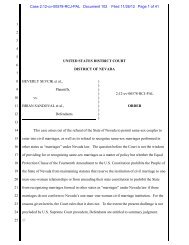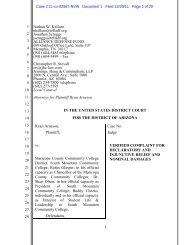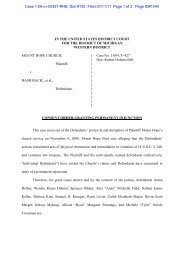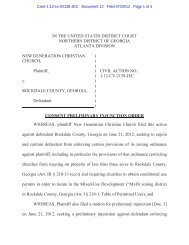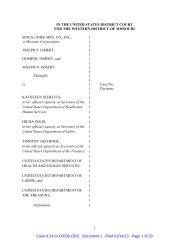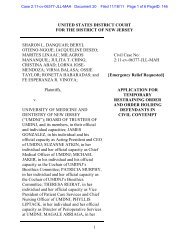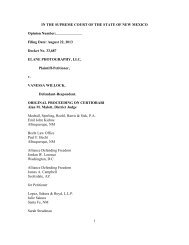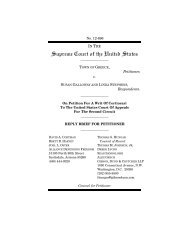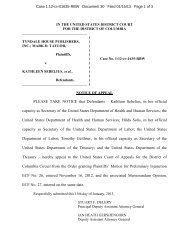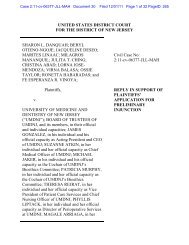English - Alliance Defending Freedom Media
English - Alliance Defending Freedom Media
English - Alliance Defending Freedom Media
You also want an ePaper? Increase the reach of your titles
YUMPU automatically turns print PDFs into web optimized ePapers that Google loves.
7<br />
sentence of Article 4(1) draws its understanding of the unborn’s right to life from the first<br />
sentence, which declares that every person has this right. This means that the Convention not<br />
only declares that unborn children have a right to life, but also that they are persons. In this<br />
particular regard Article 4(1) allows no other interpretation, since its first sentence refers to the<br />
right of every person to have his or her life respected and the second prescribes an obligation to<br />
protect this right of the person, in general, from the moment of conception. Any attempt to<br />
restrict the scope of the concept of person to some later starting point—whether before, at the<br />
moment, or after birth—is excluded by the clear language of Article 4(1).<br />
The foregoing assertions can be buttressed by other norms in the Pact of San José,<br />
which exhibit a general trend in the Convention in this regard. For instance, Article 1(2)<br />
establishes that “[f]or the purposes of this Convention, ‘person’ means every human being.”<br />
This norm, which has no counterpart in the European Convention for the Protection of Human<br />
Rights and Fundamental <strong>Freedom</strong>s (European Convention or ECHR) or in the ICCPR,<br />
reinforces the unborn child’s personhood, since it is very difficult to contest the fact that<br />
embryos and fetuses belong to the human species. 18 Another norm is Article 4(5), which forbids<br />
the application of capital punishment to pregnant women, since this rule was not established in<br />
favor of the mother (whose basic rights are put to an end with capital punishment), but rather in<br />
favor of the developing child. 19 Besides, the American Convention is not the only human rights<br />
treaty to make explicit declarations regarding the unborn, since the ninth paragraph of the<br />
Preamble of the Convention on the Rights of the Child also does so. Quoting the Declaration<br />
of the Rights of the Child, it declares that “the child, by reason of his physical and mental<br />
it happens with the International Convention on the Elimination of All Forms of Racial Discrimination, with the<br />
Convention on the Elimination of All Forms of Discrimination Against Women and with the Convention on the<br />
Rights of Persons with Disabilities.<br />
18 It cannot be said that this rule wishes to clarify that women are protected by the Convention, since there<br />
has never been any doubt in this regard, and because the American Treaty does not use the word men when referring<br />
to persons. An author who contests the unborn’s humanity is Philip Alston, who also considers that in<br />
international law “there is no precedent for interpreting either that term [child], or others such as ‘human being’ of<br />
‘human person,’ as including a fetus.” He, nevertheless, considers that Article 4(1) of the American Convention<br />
specifies its intention of considering the unborn as a human being. Philip Alston, The Unborn Child and Abortion<br />
Under the Draft Convention on the Rights of the Child, 12 HUM. RTS. Q. 156, 170 (1990). But see RITA JOSEPH, HUMAN<br />
RIGHTS AND THE UNBORN CHILD (2009) (citing various sources of international law as affirming the unborn as a<br />
human being).<br />
19 This is similar to the right established in art. 6(5) ICCPR. According to the travaux préparatoires of this<br />
latter Convention, “[t]he Principal reason for providing […] that the death sentence should not be carried out on<br />
pregnant women was to save the life of an innocent unborn child,” A/3764 118, reprinted in THE RIGHT TO LIFE<br />
IN INTERNATIONAL LAW, 53 (B. G. Ramcharan ed. 1985).



